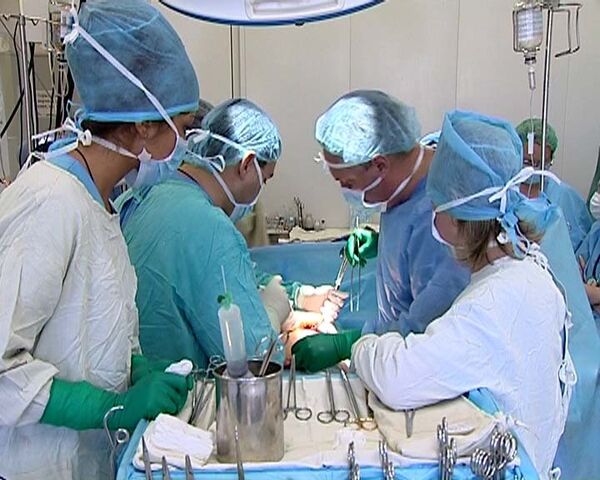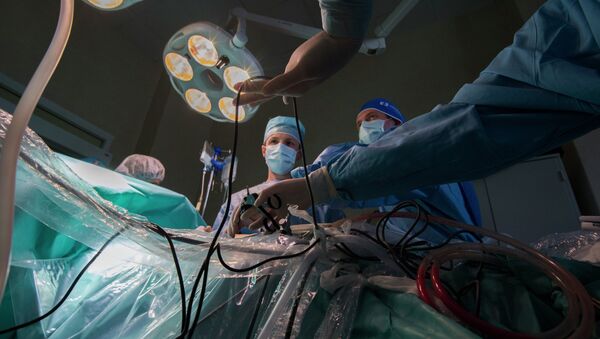According to World Health Organisation (WHO) estimates, 2.6 million people received dialysis needed for chronic kidney diseases in 2010. The need for dialysis may double by 2030.
“Chronic kidney disease is an acute problem for public health. Today, there are only two alternatives for these patients: kidney transplantation or dialysis”, said Dmitry Telyshev, director of the Institute for Bionic Technologies and Engineering at Sechenov First Moscow State Medical University.
“We offer an alternative life-support mechanism for patients with kidney failure: to use a wearable artificial kidney (WAK), which not only allows for increased comfort in treating patients but also personalised treatment by controlling the process of peritoneal dialysis”, he added.
The device consists of a system of pumps and valves that circulate fluid through a system of filters for mechanical cleaning, sorption columns and an electrolyser, a container for excess fluid that is removed from the body, as well as a battery and control system.
Advantages of a Wearable Artificial Kidney
A portable device for artificial blood purification will help to overcome the shortcomings of existing devices and dialysis methods.
One of its advantages is that the patient can carry out this procedure at home independently.
“The main goal is dialysis at home without the participation of doctors. Of course, medical supervision is required but not on a permanent basis. The doctor has to configure the procedure parameters based on the initial tests, and then the patient will be able to do dialysis at home, visiting the doctor for periodic examination”, Chief Project Officer Nikolai Bazayev, a senior researcher at Sechenov University, stated.
The scientist explained that the breakthrough of the device created at the university is the multiple uses of dialysis fluid. Usually, when using stationary devices this liquid is drained out of the peritoneal cavity after the procedure, therefore it is required in large quantities – up to 150 litres per dialysis session. Furthermore, a special water treatment system is required for its preparation.
“In the new device, the dialysis regeneration unit allows the use of only three litres of fluid and thus, does not depend on the water treatment system”, said Bazayev.
Wearable Artificial Kidney: Using Modern Technology
The device is controlled via smartphone, which controls the temperature, fluid pressure and other indicators, notifying the patient if the values are outside the normal range. The scientist gave assurances that any possible errors by mobile phones will not affect the functioning of the artificial kidney.
“A smartphone is only needed to start and complete the dialysis. The rest of the time, it is not required. It only displays information about possible problems while using the device”, he said.

The phone, moreover, duplicates the functions of the display module responsible for complete control of the device.
“Even in the worst-case scenario, when everything fails and the device shuts down, a patient can perform peritoneal dialysis without the device”, the scientist explained.
Cost and Prospects
The device’s performance has already been tested in laboratory conditions using a container simulating a human abdominal cavity. For experiments with living organisms, pigs were selected as fairly large animals with an abdominal cavity volume comparable to that of a human being.
The results have confirmed that the device can successfully remove metabolic waste products, including urea, allowing its concentration in the blood to be maintained at a physiological level.
Scientists are now working on collecting statistics on the treatment of acute kidney failure in animals. Then they intend to attract investors and carry out clinical research study. It is planned to organise production, acquire certification, and introduce the device on the market by 2020-2023.
“We plan to enter the international market. A large amount of time and documentation is required to obtain European or American certification, thus we need investors which we are currently looking for”, Bazayev said.
He noted that the economic component is a key factor in conducting a marketing campaign. Currently, the cost of treatment using an artificial kidney device is comparable to haemodialysis and peritoneal dialysis. In the long run, it is planned to reduce the price by 1.5 times relative to clinical methods so as to make it $40 per procedure. The approximate price of the device is $10,500.
“In this case, the price of the device is not very important. The main challenge is to make low-cost medical consumables”, Bazayev concluded.


